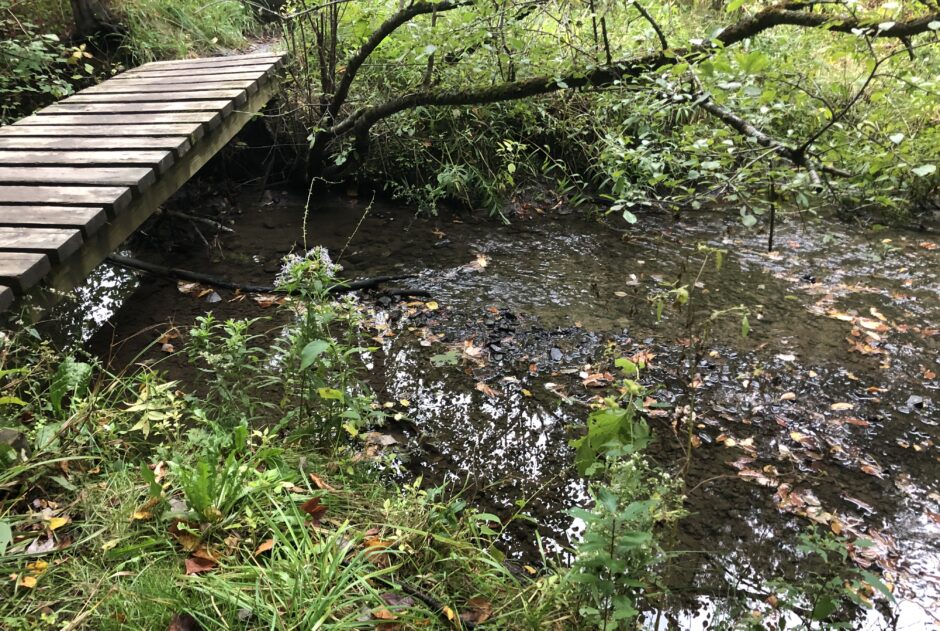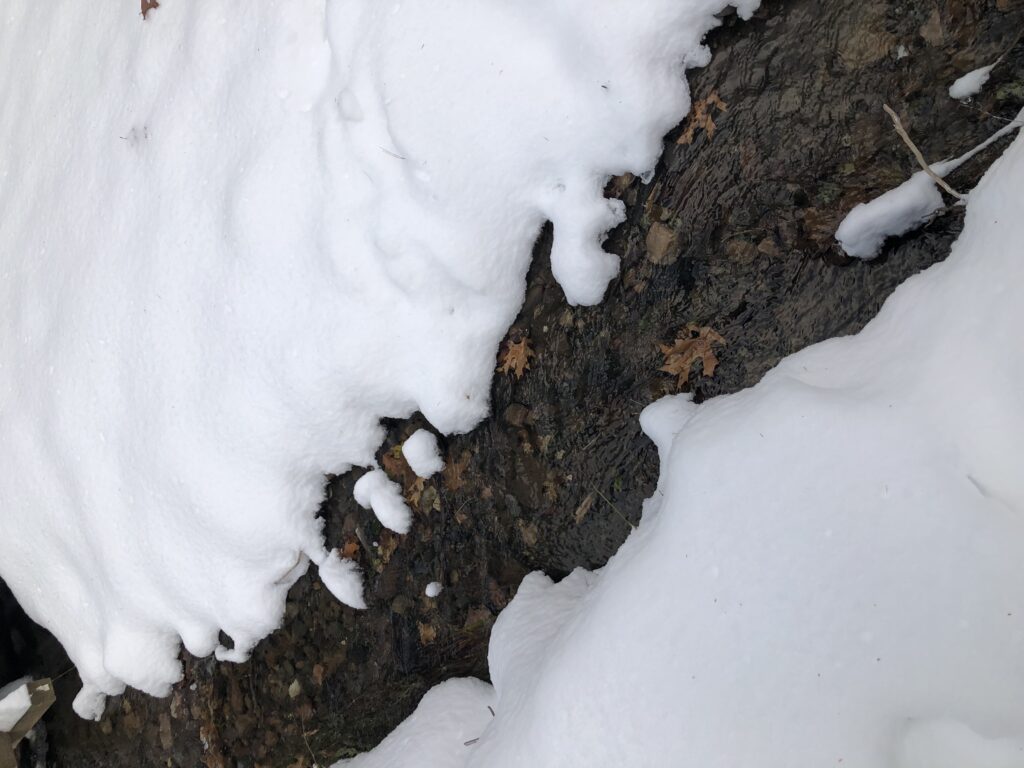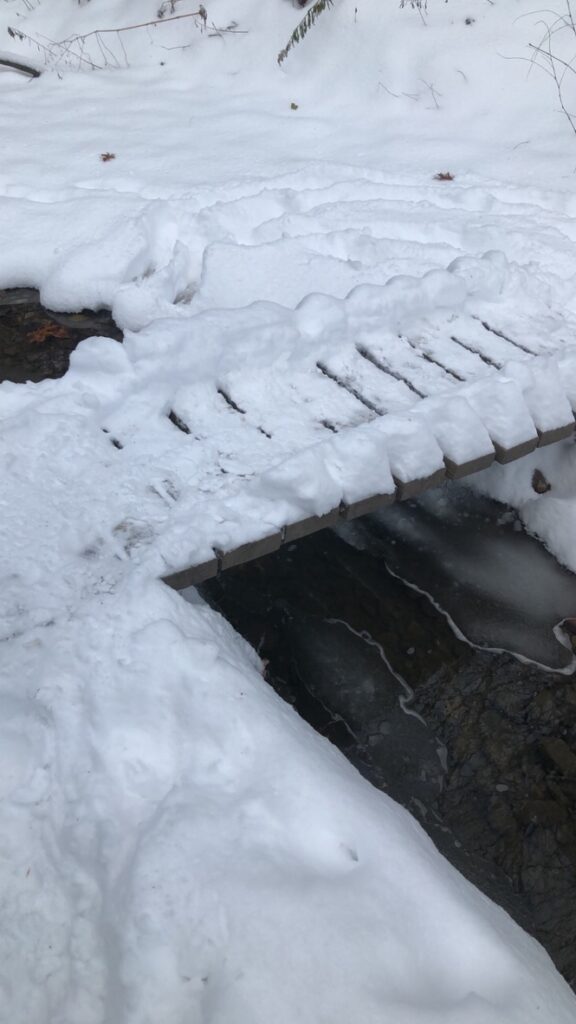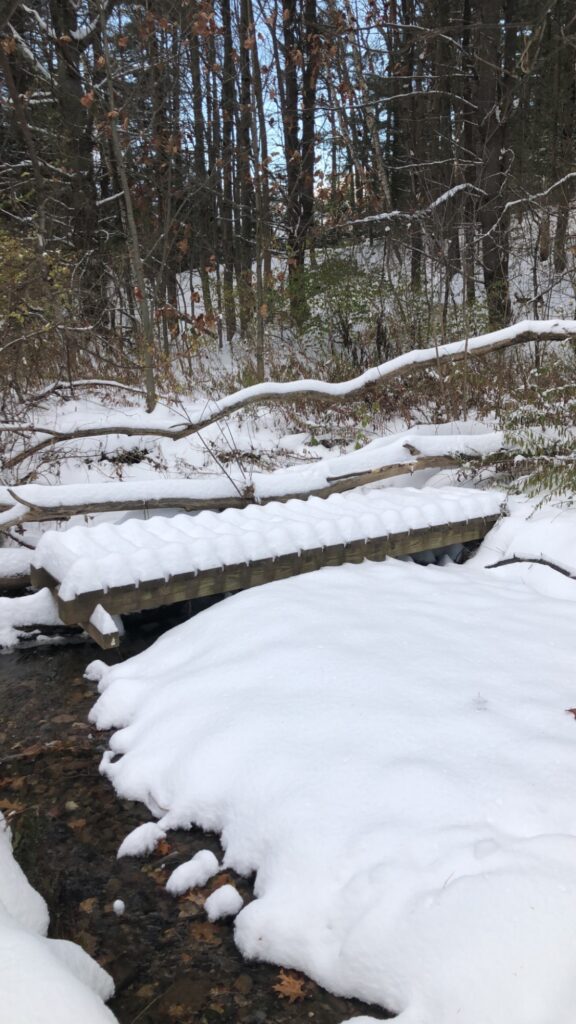
My relationship with Centennial woods is both academic and recreational. I have gone to my site on multiple occasions for classes, labs, and just to enjoy a forested area so close to campus. For myself, the brook in these woods has been a setting for relaxation, contemplation, and curiosity. As the seasons have changed, simply the way I can exist in this place has changed. The brook once flowed, the bridges were crossable, and there was much more foot traffic. Today, the water is frozen over, and the brook is almost unrecognizable. It has stayed beautiful throughout the transitions, but the habitat evokes very different feelings than it did in October.
The most prominent feature of Centennial Woods in my own definition of sense of place, is the fact that it provides dozens of acres of forest right in the city of Burlington. I value these woods for the escape they provide, a glimpse of serenity in the fast paced day to day life. I have a strong sense of place here because I have always valued landscapes similar to these woods, and have always spent a great deal of time in them. I feel strongly tied to Vermont because of its natural landscape, that being a majority forested region. Knowing that these woods were once agricultural land and sheep grazing lands, I do not think I could’ve felt as connected to this location during those times.
During a period of logging, grazing, and decimation of regional and state wide forests and soils, I honestly do think I would’ve felt like what society was doing with the land benefitted me. During that time, land was valued higher when it was modified to meet the needs of production. Today, Centennial Woods is still a productive place, but in a very different way.
Centennial woods is becoming a place that is increasingly contaminated from impervious surface runoff, encroaching buildings and major roadways that increase the “edge effect”, as well as power lines and runoff ponds. These woods are slowly shrinking from a variety of human land use practices, but fortunately UVM donated the rights of the woods to the Vermont Land Trust so that they should be conserved indefinitely.
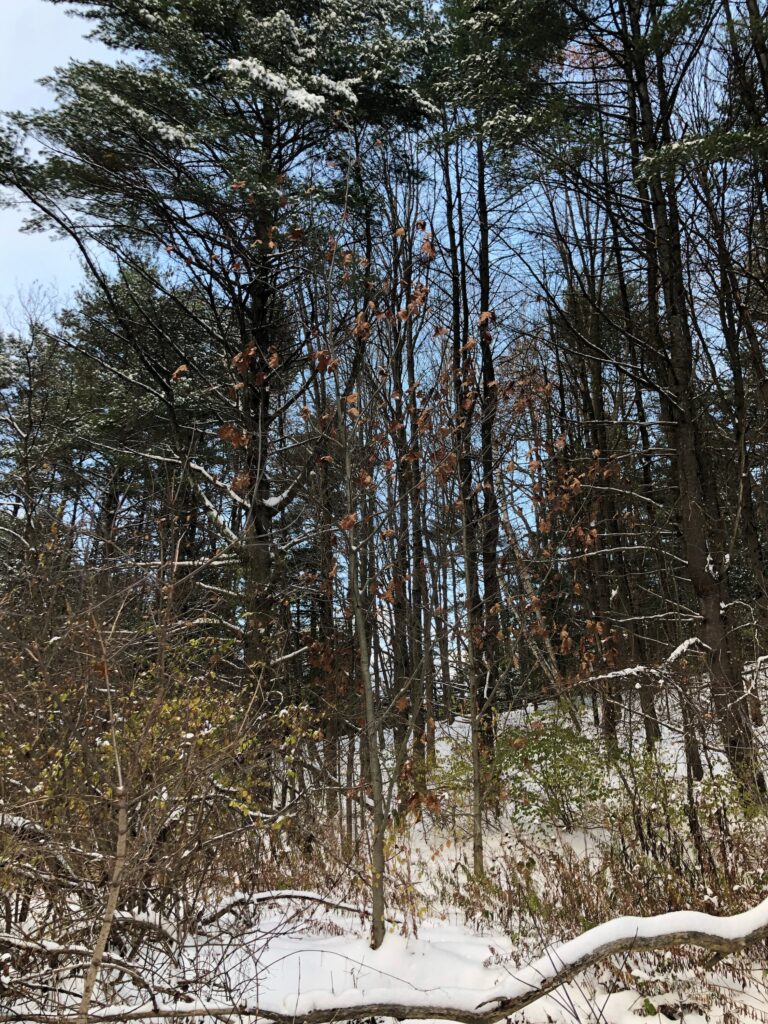
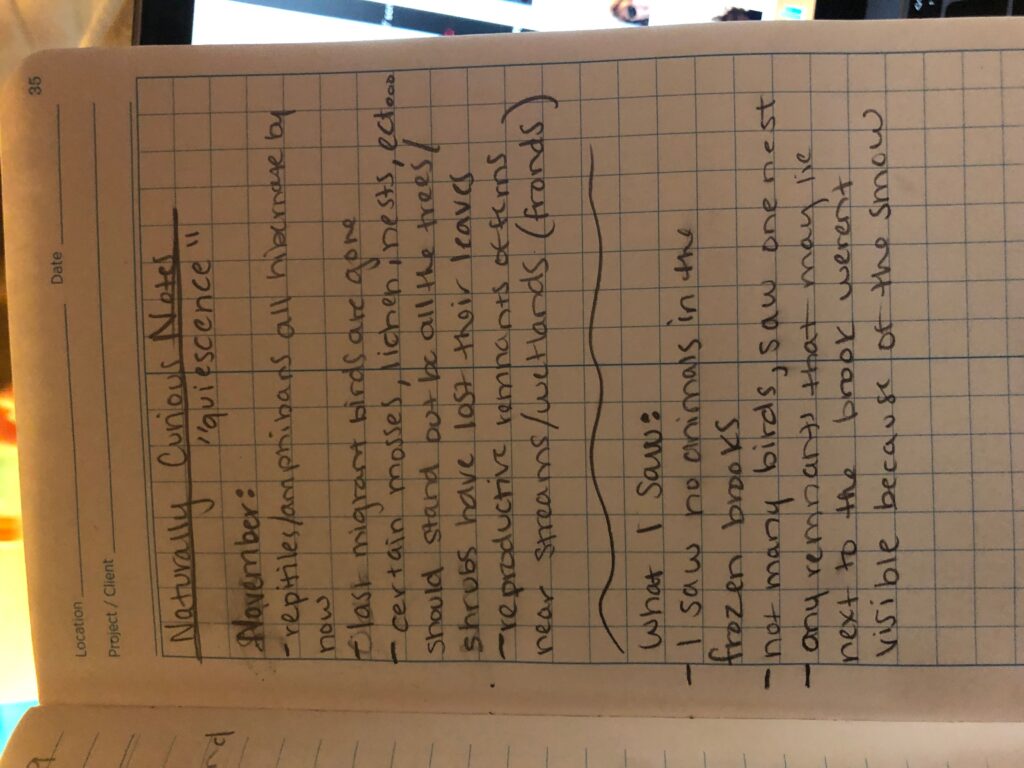
Field notes 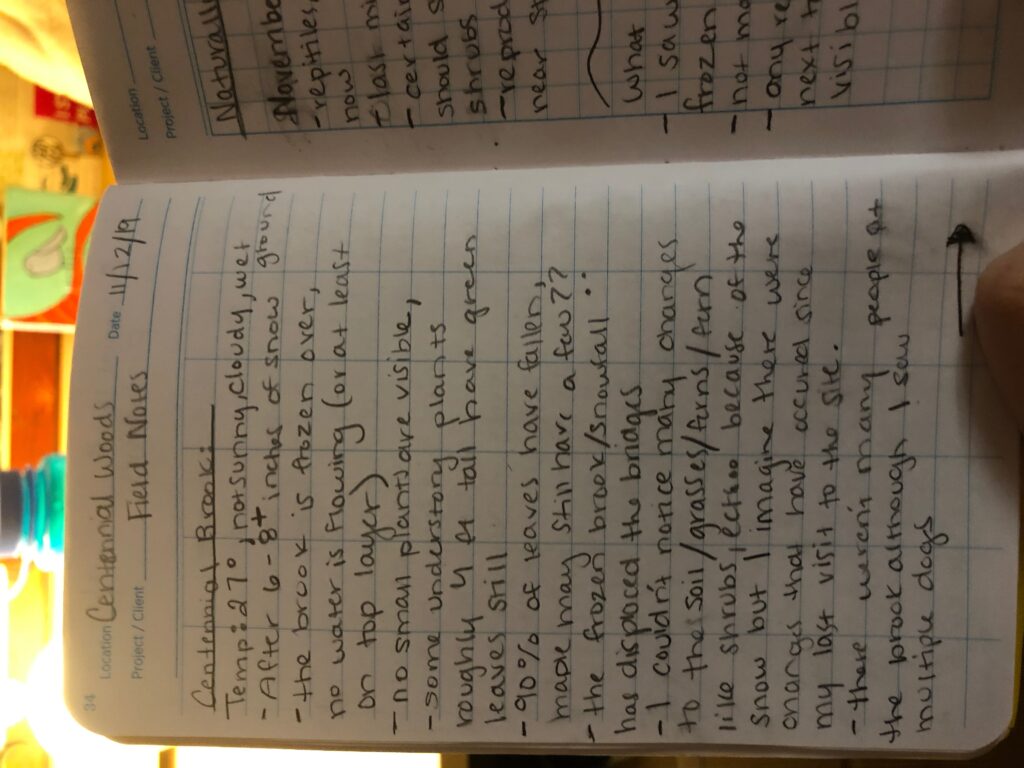
Field Notes Cont’d
